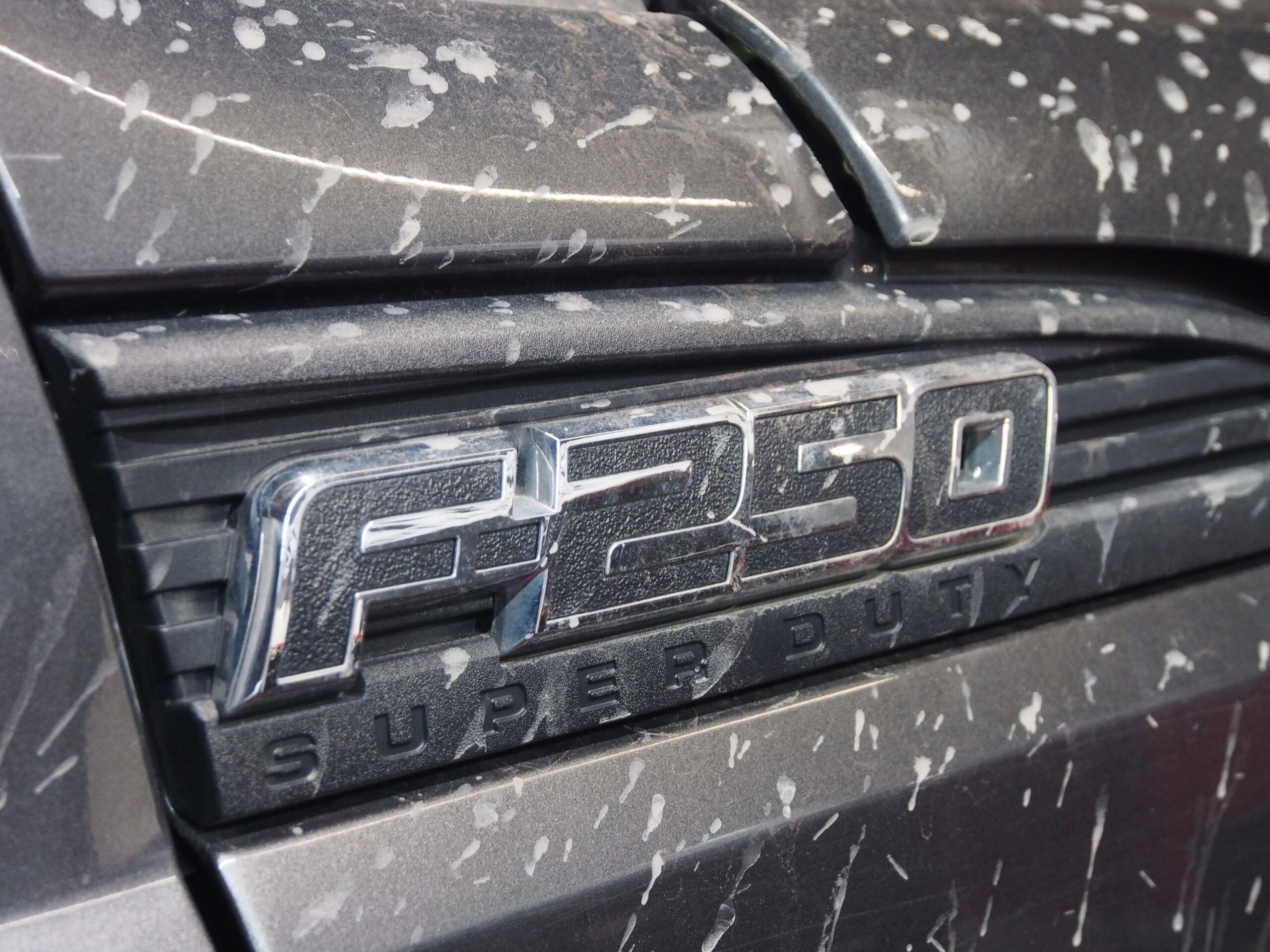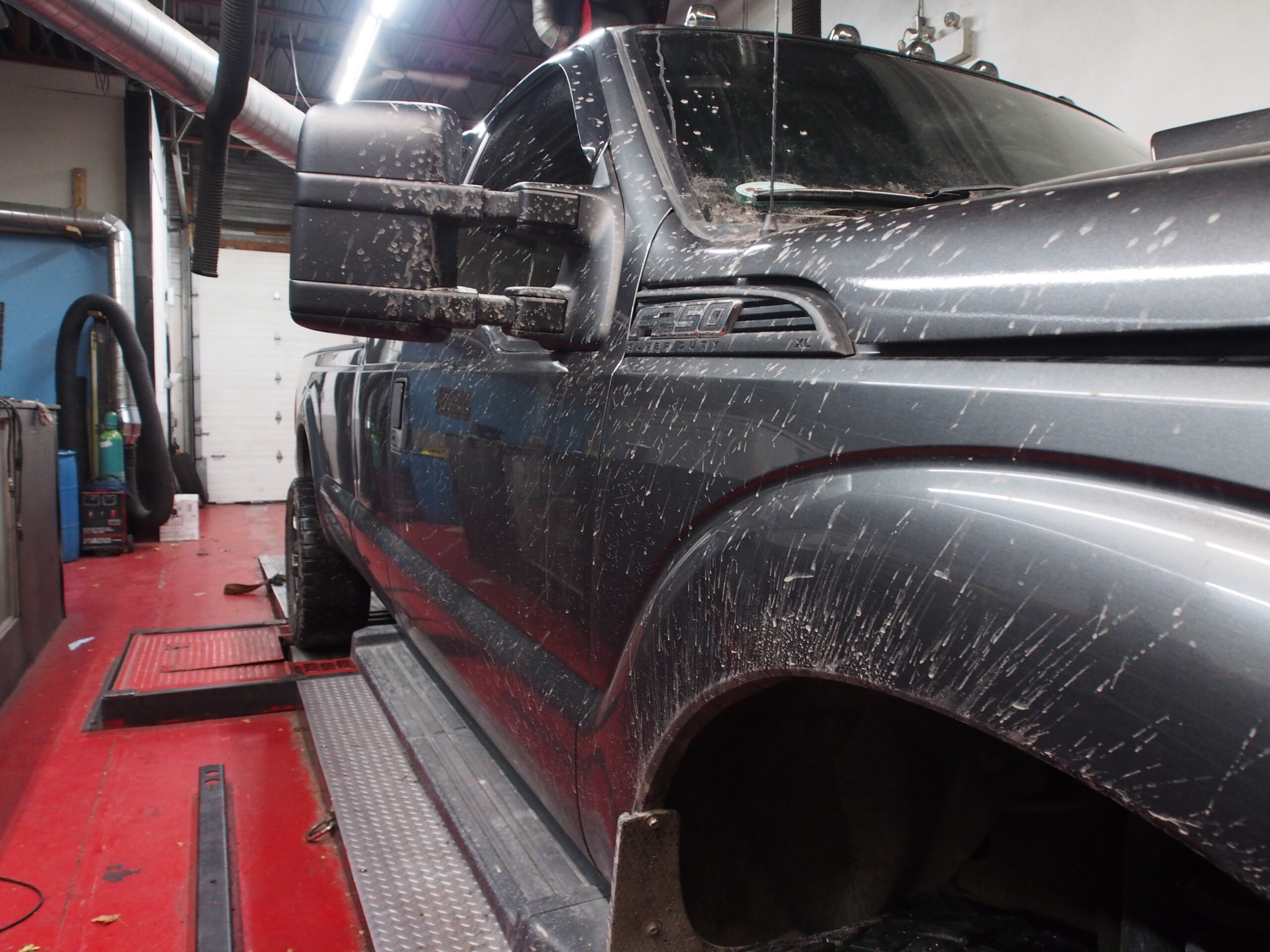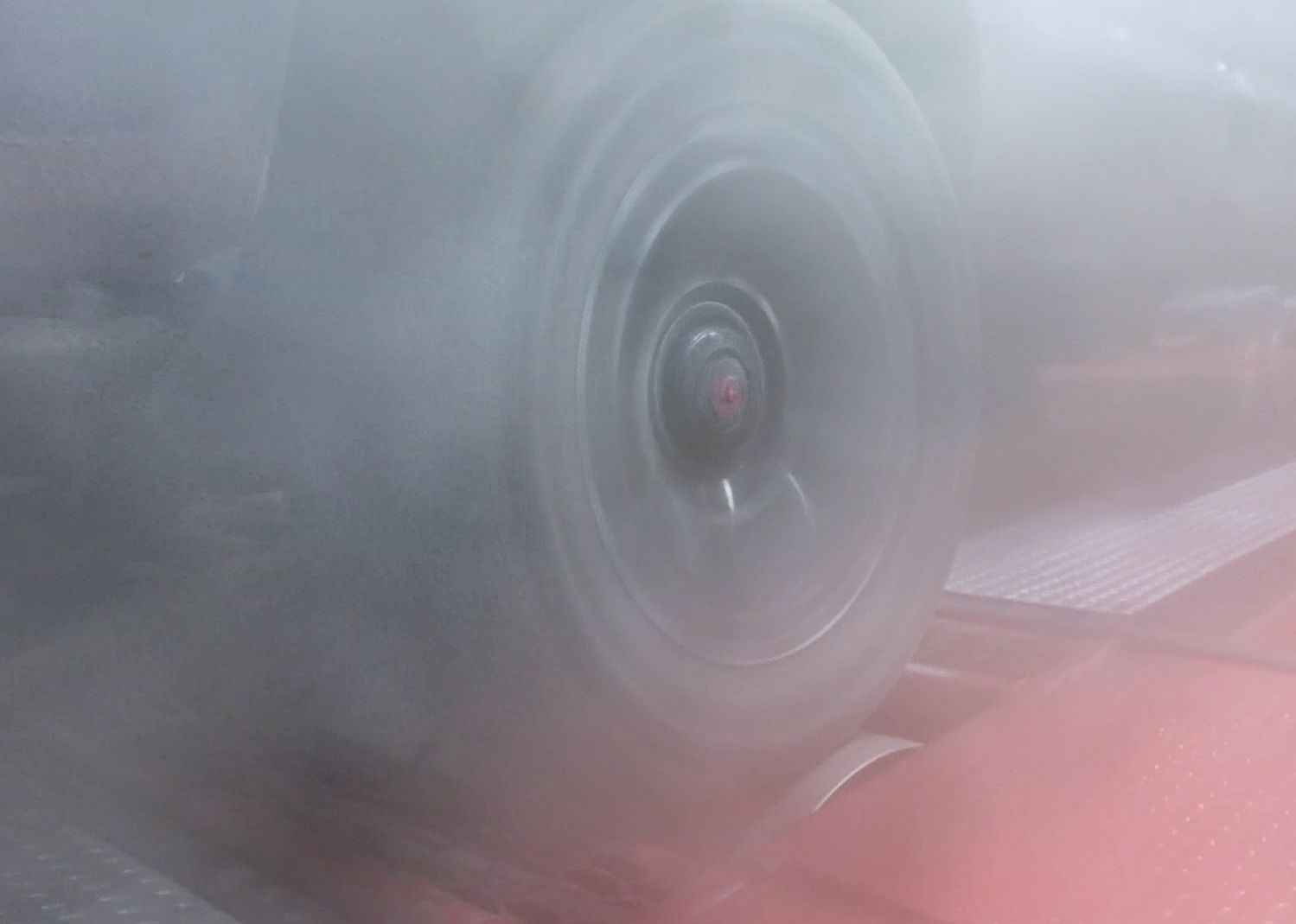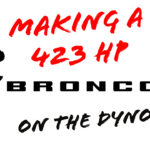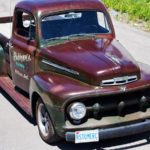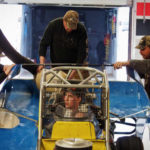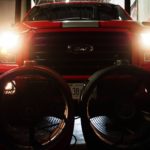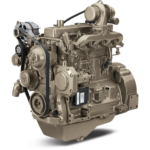Dyno testing & tuning an F250, 6.2L Super Duty pickup with a whipple supercharger modification
Cody Stratuik from Stratuik Auto Repair in Kingston, Ontario, brought us a customer’s big 6.2L F250 Super Duty that he’d been struggling with. As Cody put it:
[we] originally started with bolt-ons that didn’t really make a difference, after a few months of having those on, we went to headers and full exhaust – still wasn’t enough so a Whipple 2.9L supercharger [was installed].
But after installing the Whipple, the big F250 lost power, idled rough, misfired, and ran worse than ever.
Cody correctly diagnosed an improper air/fuel mixture caused by the Ford’s ECU not communicating with the Whipple kit’s throttle body. Unsure of how to proceed, Cody turned to us for help. Since the F250 wasn’t roadworthy, Cody floated it up to us, and we got to work.
Modifying the Whipple Supercharger
The first thing we discovered was that Whipple couldn’t provide the base tune specs for their dual-mount throttle body to communicate with a Ford ECU. We determined the only solution was to reinstall the original stock throttle body.
For this, we turned to our friend Hayden Cross to fabricate a custom intake adapter connecting the stock throttle body to the Whipple. Hayden didn’t let us down and built the perfect piece of hardware.
The 2.9L Whipple Supercharger
Put in the simplest terms, the supercharger adds 2.9 litres of air from the existing atmosphere. It forces air into the combustion chamber with every revolution of a pully connected to the crank allowing the HP and Tq to continue to climb. This “forced aspiration” prevents the engine from running out of air once adequate atmospheric pressure no longer provides sufficient volume.
PREPARING FOR THE CHASSIS DYNO
After installing the custom adapter and reinstalling the stock throttle body, we spent several hours tuning the F250’s ECU in the parking lot. We took it for short test drives between adjustments until we finally got a crisp enough throttle response that it was safe to run on the chassis dyno.
The Goal
This truck’s intended use is as a workhorse. The owner uses it for snow plowing and towing heavy trailers. He’s looking for torque and power to begin right at the lower end and deliver, without hesitation, through to the top. Producing this kind of power under-load can result in a fuel-thirsty engine, so we must get the air/fuel mix right to provide a powerhouse that avoids unnecessarily excessive fuel consumption.
The First Pull on the Chassis Dyno
The first step in dyno tuning is to make a few baseline passes to determine how the engine is performing before making adjustments to the ECU and repeating this process until we are in optimal parameters.
We stayed in the lower RPM range through the first pass, limiting to about 4,000 rpm even though this motor could easily rev to 6,000-6,500. It’s essential, especially on a customized engine like this one, to keep the revs low on the first pass and see how it holds up; otherwise, we risk damaging the engine.
On the first pass, this 6.2L dual-overhead-cam easily pulled 413.73 ft-lbs. of torque @ 3,100 rpm and made 251.68 HP @ 3,300 rpm on closely aligned power curves but with power dropping off rapidly around 3,300 rpm due to incorrect Mass Air Flow table parameters
A Face Full of Exhaust
If you look at the first pass on the video (5:09-5:20), you’ll notice that our cameraman got a face full of exhaust and oil. Most of the smoke was blue and black. The blue smoke is indicative of the 173,000 hard-working kilometres on this engine, and the black is the result of excess fuel coming out of the combustion chamber due to a poor fuel-to-air mixture – we successfully tuned out 98% of the black exhaust smoke. The oil spray resulted from accumulated oil in crevices and gaps within the intake, exhaust and combustion chamber. With the supercharger increasing the airflow so dramatically, this accumulation blew out in the first few passes.
*for an even more intense “face full of exhaust,” check out this video of a record-breaking Dodge Turbo 3500 diesel.
The Second Pull on the Chassis Dyno
On the second pass, we accelerated aggressively to about 5,700 rpm, where the Whipple made a nice steady curve to 467.41 HP. With the air/fuel ratio still needing further adjustment, the torque curve was uneven but still made 483.04 ft-lbs at 4,400 rpm, where it barely began falling over by about 25 ft-lbs.
Since this is a working truck, it’s unlikely to be pushed to 4,400-5,700 rpm. Looking where it’s most likely to do most of its work, in the 3,200 to 3,600 range, we see this truck making a healthy 470 to 475 ft-lbs. of torque with the HP climbing on a steady power curve.
491.83 ft-lbs of torque @ 3,800 rpm
What we’d typically expect to see in a non-supercharged or non-turbo engine is a dramatic fall-off of HP and Tq around the 4,200 rpm mark. However, as you can see on the graph, the F250 continues to build HP through the power curve with only a minimal fall-off of torque around 5,200 rpm. This is the effect of the Whipple Supercharger forcing air into the combustion chamber with every revolution and defeating the tendency of the engine to run out of air from natural aspiration at higher RPMs.
Another Satisfied Customer at International Dyno Authority
Here’s what Cody had to say to us when all was said and done:
Over the past few months, we took on a new project for a good customer; originally started with just little bolt-ons that didn’t really make a difference, but after a few months of having those on, we went to headers and full exhaust – still wasn’t enough so a Whipple 2.9L supercharger it is. This setup, I’ve learned, hasn’t been done on this year or style of truck, and I’d like to give a HUGE shoutout to Marc and Wally over at International Dyno Authority for being patient and not giving up on the process behind the tuning. If you need anything tuned, these are your guys. The truck sat there for a few days while they figured the tuning out and got it running amazingly and able to dyno. Whipple wasn’t much of a help as they offered no base tune, no data or anything regarding this truck. Marc and Wally figured it out and were super fair on pricing for their time.
Customers happy, I’m happy, and we had it a little detuned, so the motor is safe.
Did I mention it’s roughly 500 horsepower at the wheels? And it shows
Took the customer for a drive last night, and he was nonetheless very impressed with everything.
What started out as a backup work truck/play toy turned into a very aggressive sleeper.
 Marc Chartrand
Marc Chartrand